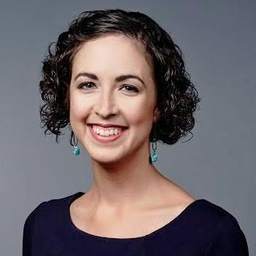Kainaz Amaria and Imaeyen Ibanga are the type of extroverted, vibrant people who can win over a room within minutes. But they find it frustrating when they and their visual colleagues aren’t included in the room at all, especially as editorial decisions are being made.
Amaria, NPR’s picture editor, and Ibanga, a multi-platform producer at NBC News, were both part of the ONA-Poynter Leadership Academy for Women in Digital Media. Like their counterparts, they had never met before their week at Poynter, but had no shortage of topics to relate on.
Partway through the leadership week, the women sat together for a short conversation about why good visuals are so important for news coverage.
The transcript has been edited for length and clarity; a video of a portion of their conversation is at the bottom of the page.

Imaeyen Ibanga and Kainaz Amaria (Photo by Tom Caughton/Poynter)
Imaeyen Ibanga: There are two things I think we both agree upon is that when it comes to visuals: One is that not all visuals work for every medium, and the other is that you should be there for conversations for visuals on digital platforms at the beginning. It’s not like, “We have this story, you should [figure out art] for it later.” When the idea is bubbling up and processing, we should be there, be part of those conversations helping to drive what that will look like and build the story.
Kainaz Amaria: I feel like with every new project or venture or anything digital, someone in the room should look around and ask, “Where is our visual expert?” We need them in the chair. We need to think about it before we start reporting. We need to think about it after we’re reporting. We need to think about it when we’re designing and making.
[We need to do that] because it’s audience-serving. The audience is going to demand it. They recognize inferior visual quality. They recognize when stories aren’t being considered.
Ibanga: It’s really funny, I think on certain platforms the audience will accept crappy videos, like on YouTube. But when they’re coming to a news organization, I don’t think they want it to look like that. I think they want it to look good and to be polished, but not in a TV kind of way. In a way that’s very authentic to the digital space.
The other thing that happens is that there are people that are in our business who don’t have any kind of visual background. We sort of have to be the ambassadors for ourselves and for our platforms.
Amaria: You’re absolutely right. Part of it is spreading the gospel of the visual language, because I think a lot of people love visuals and they want them, but they don’t know how to talk about them. Or they feel a little intimidated because they’re not experts in it. If we could do more training around the visual literacy and the language and the foundation, then we can at least come to a place where we at least understand a semblance of the language together and start from there.
Part of it is just bringing people into the fold, right? We’re not trying to hold on and hoard our expertise.
Ibanga: No, I think we all have to know it. The business is there, the audience is there: We’re all going to have to know how to do this stuff anyway.
Amaria: What are some of the things that you are excited about with where we’re going with visuals?
Ibanga: I think about when I was little, watching The Jetsons and those old Hanna-Barbara cartoons, and thinking “that would be so cool if you could watch TV anywhere.” And now we’re here. We’ve arrived.
Amaria: I think one of the things that excites me is making things of the web. This is something my team talks about a lot – not putting things on the web. So really integrating different media, different assets, and integrating images and data and text, and creating an experience that you can’t create anywhere else.
You can’t create that in a magazine. You can’t create that in a packaged video. It really utilizes everything the web has to offer in order for that story to be what it needs to be. I feel like we’ve barely scratched the surface on that, and that’s really really exciting.
Ibanga: I feel like great stories will be great stories. We can get pretty pictures from anywhere – look at Instagram. But that doesn’t necessarily mean it’s a great story and I think, first and foremost, before visual anything, before you’ve written a word, before a tweet has been sent out, we’re in the business of storytelling. That’s what I care about.
Amaria: You’re awesome.
Ibanga: You are awesome!
Watch a portion of the conversation as Amaria discusses what most excites her about visuals right now.







